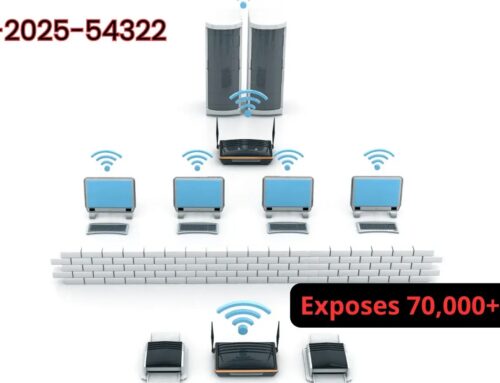
Hackers Exploit Zimbra Vulnerability as 0-Day with Weaponized iCalendar Files
Zimbra Collaboration Suite Vulnerability Exploited as 0-Day: Weaponized iCalendar Files Steal Sensitive Data
A critical zero-day vulnerability in the widely used Zimbra Collaboration Suite (ZCS) has been actively exploited in targeted attacks. This flaw, tracked as CVE-2025-27915, allowed attackers to leverage weaponized iCalendar (.ICS) files to compromise email accounts and exfiltrate sensitive user data. The discovery, credited to StrikeReady, highlights the persistent threat posed by sophisticated adversaries targeting essential enterprise communication platforms.
Understanding CVE-2025-27915: A Stored XSS Vulnerability
The vulnerability, CVE-2025-27915, is categorized as a stored Cross-Site Scripting (XSS) flaw. This type of vulnerability occurs when an application stores untrusted data without proper sanitization and subsequently displays it in a web browser. In the context of ZCS, attackers embedded malicious scripts within iCalendar files. When a victim opened or previewed these weaponized files within the Zimbra client, the embedded script executed in their browser’s context.
The implications of a stored XSS are severe: once the script executes, it can perform actions on behalf of the user, such as:
- Stealing session cookies, leading to account takeover.
- Defacing web pages or injecting malicious content.
- Redirecting users to phishing sites.
- Exfiltrating sensitive data directly from the user’s email account.
The Attack Vector: Weaponized iCalendar Files
Attackers specifically chose iCalendar (.ICS) files as their delivery mechanism. iCalendar is a standard format for exchanging calendaring and scheduling information. While seemingly innocuous, these files can contain various data fields, some of which Zimbra’s parsing engine failed to robustly sanitize. By crafting malicious entries within these fields, threat actors could embed their XSS payload.
The primary advantage of using iCalendar files for attackers is their common use in business communication. Users are accustomed to receiving and interacting with calendar invitations, making such an attack less suspicious than direct email links or suspicious attachments. This social engineering aspect, combined with the technical flaw, created an effective infiltration method for targeted attacks.
Impact of the Zimbra 0-Day Exploitation
The successful exploitation of CVE-2025-27915 granted attackers unauthorized access to victims’ email accounts and associated sensitive data. Given that Zimbra Collaboration Suite is widely used by organizations globally for email, calendaring, and collaboration, the potential impact is significant. This could include:
- Data breaches involving confidential communications.
- Loss of intellectual property.
- Credential theft and subsequent lateral movement within an organization’s network.
- Espionage against targeted individuals or entities.
The “0-day” nature of the vulnerability means that organizations were vulnerable before a patch was even available, making rapid detection and mitigation extremely challenging.
Remediation Actions for Zimbra Organizations
Organizations operating Zimbra Collaboration Suite deployments must take immediate action to address the threat posed by CVE-2025-27915 and similar vulnerabilities:
- Apply Patches Immediately: Monitor official Zimbra security advisories for patches addressing CVE-2025-27915 and subsequent releases. Prioritize and apply these updates as soon as they become available.
- Educate Users: Conduct immediate security awareness training for all users on the dangers of suspicious calendar invitations and email attachments, even from seemingly legitimate senders. Advise caution when opening or previewing iCalendar files from unknown sources.
- Implement Email Gateway Protection: Ensure email security gateways are configured to scan all incoming attachments, including iCalendar files, for malicious content and suspicious scripts.
- Deploy Web Application Firewalls (WAFs): A properly configured WAF can help detect and block XSS attempts by scrutinizing HTTP traffic and filtering malicious input before it reaches the Zimbra application.
- Monitor Logs for Anomalies: Continuously monitor Zimbra server logs, email gateway logs, and user activity for any unusual patterns, such as increased data egress, unauthorized logins, or suspicious script executions.
- Enforce Strong Authentication: Mandate multi-factor authentication (MFA) for all Zimbra accounts to add an extra layer of security, even if credentials are compromised through XSS.
- Regular Security Audits: Perform periodic security audits and penetration tests on your Zimbra infrastructure to identify and address potential weaknesses proactively.
Tools for Detection and Mitigation
Leveraging appropriate cybersecurity tools can significantly enhance an organization’s ability to defend against vulnerabilities like CVE-2025-27915.
| Tool Name | Purpose | Link |
|---|---|---|
| ModSecurity (WAF) | Web application firewall for XSS detection and prevention. | https://modsecurity.org/ |
| ClamAV | Open-source antivirus engine for scanning email attachments. | https://www.clamav.net/ |
| OSSEC (HIDS) | Host-based Intrusion Detection System for file integrity monitoring and log analysis. | https://www.ossec.net/ |
| Zimbra Log Analysis Tools | Tools for parsing and analyzing Zimbra server logs for anomalies. | (Varies, often integrated into SIEM or custom scripts) |
Conclusion
The exploitation of CVE-2025-27915 in Zimbra Collaboration Suite underscores the critical importance of diligent vulnerability management and a multi-layered security approach. Organizations must remain vigilant, prioritize patch deployment, and continuously educate users about emerging threats. Proactive security measures, combined with robust detection and response capabilities, are essential to protect sensitive data from sophisticated attackers exploiting zero-day vulnerabilities.





